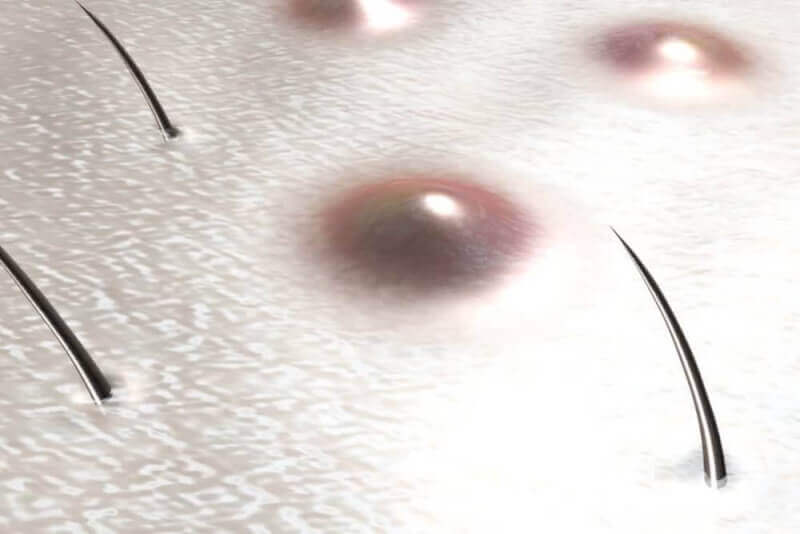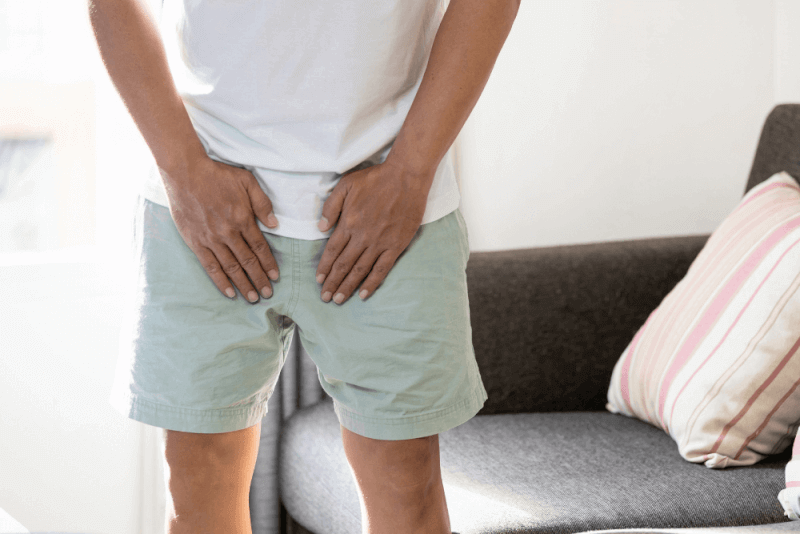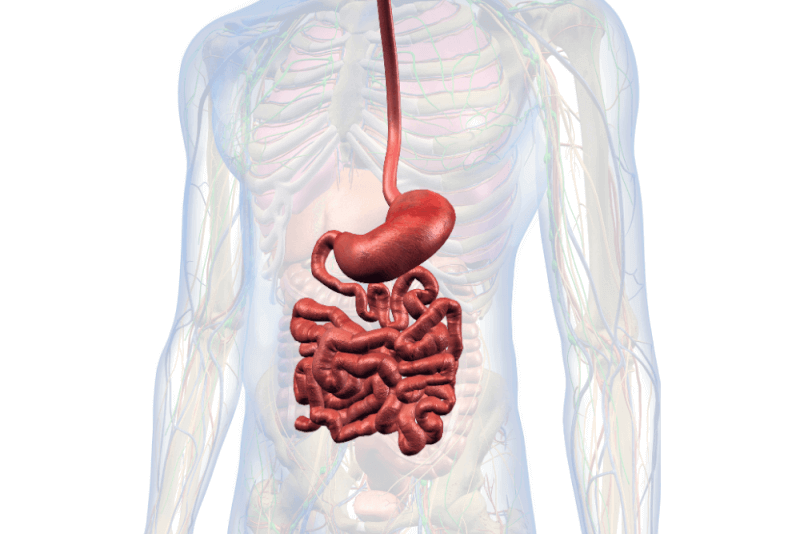30 Second Summary
- Ingrown hair is a skin disease that causes the hair in the area between the coccyx and buttocks to become buried under the skin and become inflamed.
- The most common cause of ingrown hair is excessive hair growth.
- Symptoms of ingrown hairs include pain, swelling, redness, tenderness and discharge.
- Ingrown hairs are usually treated surgically.
What is ingrown hair?
Ingrown hair is a condition known as pilonidal sinus or pilonidal disease. This condition occurs mostly in the sacral region (the area between the coccyx and buttocks) and is most common in the young adult category. Ingrown hair is a type of infectious disease that basically causes the hairs and hairs on the skin to curl and become embedded in the skin, causing inflammation.
The main cause of ingrown hairs is the accumulation of hairs under the skin, where they cause inflammation. This is usually caused by irritation of the hair follicles, friction or infection. Symptoms of ingrown hairs include pain, swelling, redness, tenderness and discharge. In advanced cases, an abscess may develop around the ingrown hair.
Treatment options include conservative approaches such as antibiotics, local hygiene measures and warm compresses. However, surgical intervention may be required in advanced cases. Surgical options may include complete removal of the ingrown hair or drainage of the sinuses. Surgical intervention is usually successful and most patients make a full recovery.
If left untreated, ingrown hairs can become chronic and recur. Therefore, early diagnosis and appropriate treatment are important. Reducing the risk of ingrown hairs can be possible with a few simple steps such as cleaning and exercise.
Diagnostic Methods for Ingrown Hair
Clinical examination and patient complaints may often be sufficient to diagnose ingrown hairs. During the physical examination, one or more of the symptoms may be observed at the same time. Ultrasound, magnetic resonance imaging (MRI) or the contents of the sinus are also examined to find the right treatment. This allows the patient's condition to be accurately determined. The diagnosis is made by the specialist doctor and the most effective method for the treatment of ingrown hair is determined. The patient's condition is also examined and the most appropriate treatment to end the symptoms is initiated.
Causes of Ingrown Hair
- Excessive hair growth
- Irritation of hair follicles
- Friction
- Skin injuries
- Jamming
- Infections
Usually, ingrown hairs occur in the hairy areas in the sacral region, especially between the coccyx and buttocks. Factors such as obesity, excessive sweating, lack of hygiene and familial predisposition can increase the risk of ingrown hairs. The causes of ingrown hairs can be complex and many factors can come together to trigger the condition.
Symptoms of Ingrown Hair
Ingrown hairs usually occur in the area between the coccyx and buttocks. These symptoms can vary from person to person, but most often include
- Agri
- Swelling
- Current
- Sensitivity
- Redness
- Temperature increase
Many patients may notice symptoms that increase especially when sitting or when pressure is applied to the area. During the inflammatory process, an abscess may form around the ingrown hair, and systemic symptoms such as fever and general malaise may also occur. Symptoms may vary depending on the severity of the ingrown hair, the presence of infection and individual factors. If any symptoms of ingrown hair are noticed, it is important to consult a doctor.
Ingrown Hair Treatment
In order to eliminate the discomfort caused by the symptoms of ingrown hairs, it is necessary to be treated immediately. The treatment method is determined by specialist physicians according to the general health status of the patient and the extent of the case. Based on the infection status and symptoms, conservative treatment alternatives are preferred for non-progressed cases. Antibiotics and other anti-inflammatory drugs are prescribed according to the patient's history. In addition, regular and effective cleansing is recommended and various dressings are used to help the patient overcome the symptoms. The most appropriate and effective treatment method for ingrown hair, which can progress with different clinical types, is determined and started to be applied to the patient.
In cases where ingrown hair has not yet progressed, in addition to these techniques, surgical intervention is used in advanced cases. Different surgical interventions can be performed under local anesthesia to completely remove the ingrown hair and clean the area. The success of the treatment and the disappearance of the discomfort also depends on the personal measures taken by the patient. While satisfactory results are obtained in almost all surgical procedures, it is necessary to apply preventive measures to prevent recurrence of ingrown hairs. Regular and proper cleaning, sports and avoiding clothes that increase friction can eliminate the risk of recurrence of ingrown hair.
Ingrown Hair Surgery
Surgery for ingrown hair, which causes discomfort and pain to patients in their daily lives, is chosen only in advanced cases. The patient is usually given local anesthesia and different surgical techniques can be used depending on the situation. During the procedure, the sinuses where the ingrown hair is located are opened and the cystic structure formed there is drained. In very advanced cases, the extent and details of the surgical procedure may vary as it is difficult to completely remove the ingrown hair.
In general, ingrown hair surgery is not a difficult procedure. However, the healing process may vary depending on the surgical procedure and the condition of the case. Patients' stitches are usually removed after two weeks, allowing a return to daily routines. In ingrown hair surgeries, high success is achieved. While almost all of the patients have a smooth recovery, following the doctor's recommendations and not neglecting personal hygiene also increases the success rate. In addition, following up with a doctor when necessary will also prevent recurrence.
Ingrown hair surgeries can be performed using different surgical techniques depending on the patient's condition.
Summary of Surgery
Duration of Surgery: 30 Minutes-1 Hour
Anesthesia Method: Local, Spinal
Hospitalization Duration: 1-2 Days
Return to Work Period: 1-2 Weeks
Phenol Injection
It is the name given to the method of cleaning the hair in the sinus where the ingrown hair is located and injecting phenol into the formed cysts. This method, which has a 95% success rate, is frequently preferred.
Excision and Primary Closure
In this method, where the possibility of recurrence is seriously low, the entire sinus is removed and primary sutures are applied to the wound.
Kardyakis Surgery
This method, which has 0% recurrence rate, has facilitated successful results in many patients with its easy application.
Fistulotomy and Drainage
In this minimally invasive procedure, the socket between the sinus and the skin is cut with the help of a bistru and left for secondary healing. With a wet dressing, healing is accelerated.
Marsupialization
The main aim of this method, which was first performed in 1937 and is still highly preferred today, is to create a small wound and leave it for primary healing to reduce the risk of infection after excision.
Bascom Surgery
In this method in which the sinuses are removed with tiny excisions, curettage is performed by advancing in the lateral incision made at the same time. It is not a very widely used technique.
Flap Techniques
Nowadays, flap techniques, which are among the most commonly used techniques, are more preferred in cases of recurrence. After the intervention with this technique, all the sinus tracts and infected tissues are removed. There are two types of Limberg Flap and V-Y Advancement Flap.













